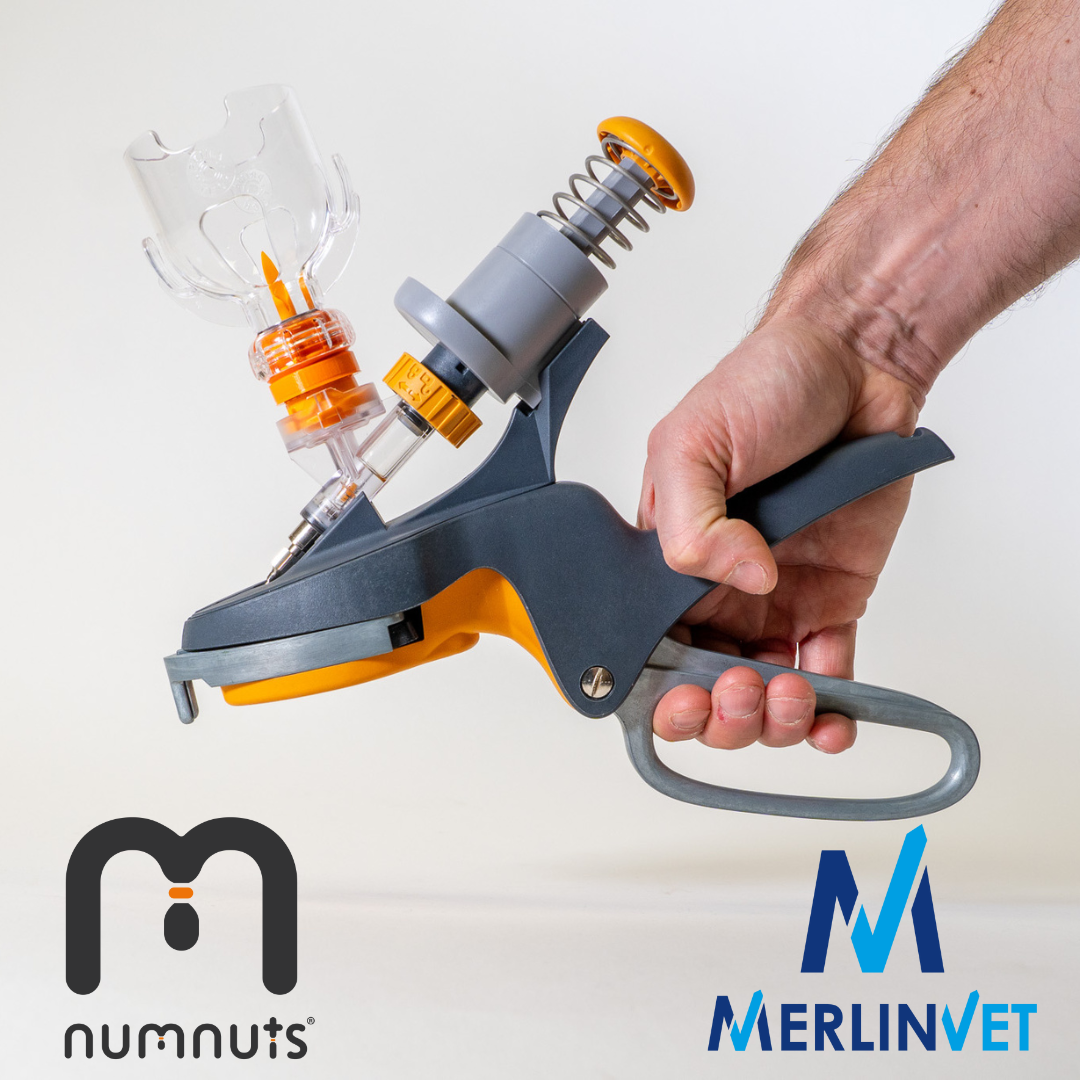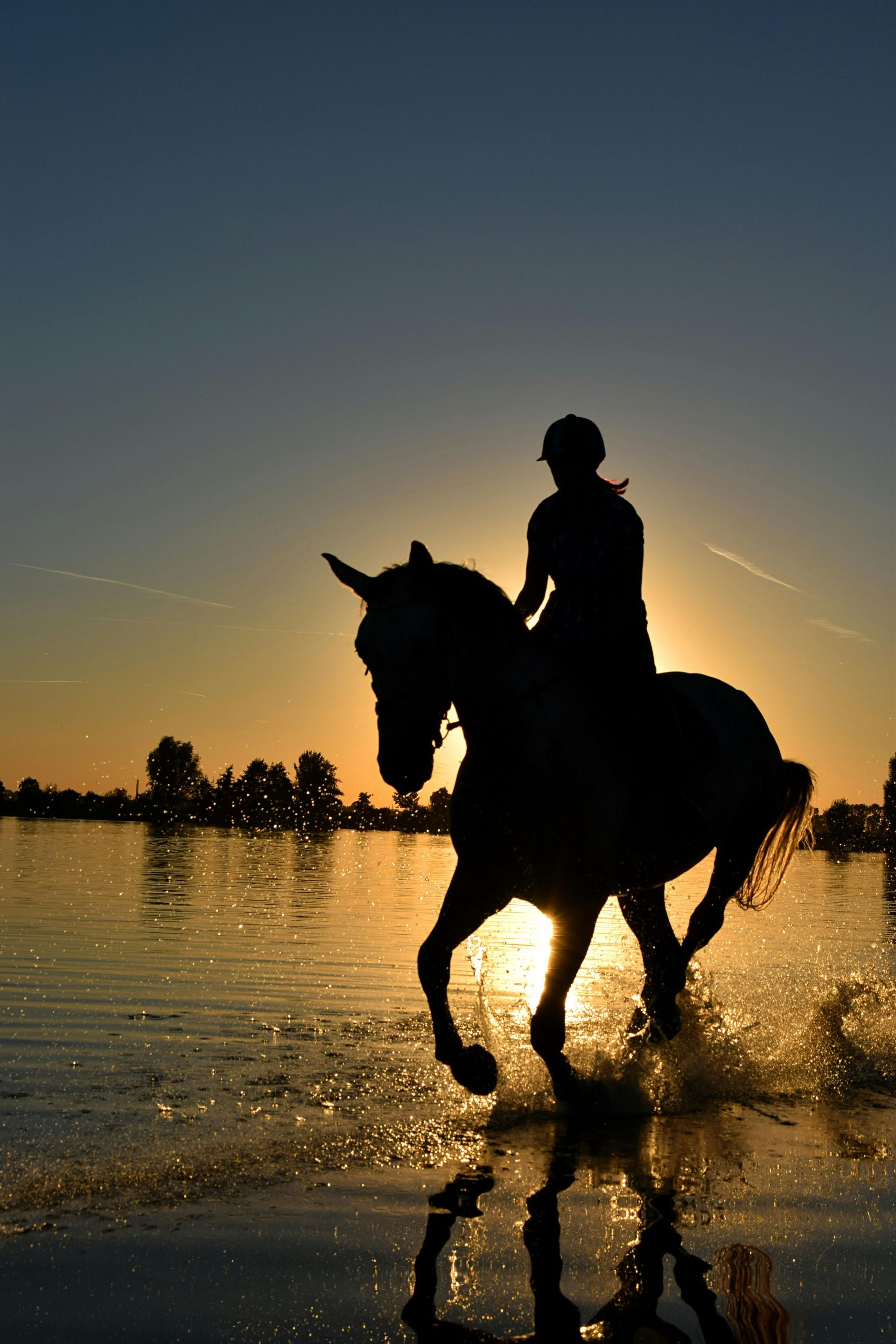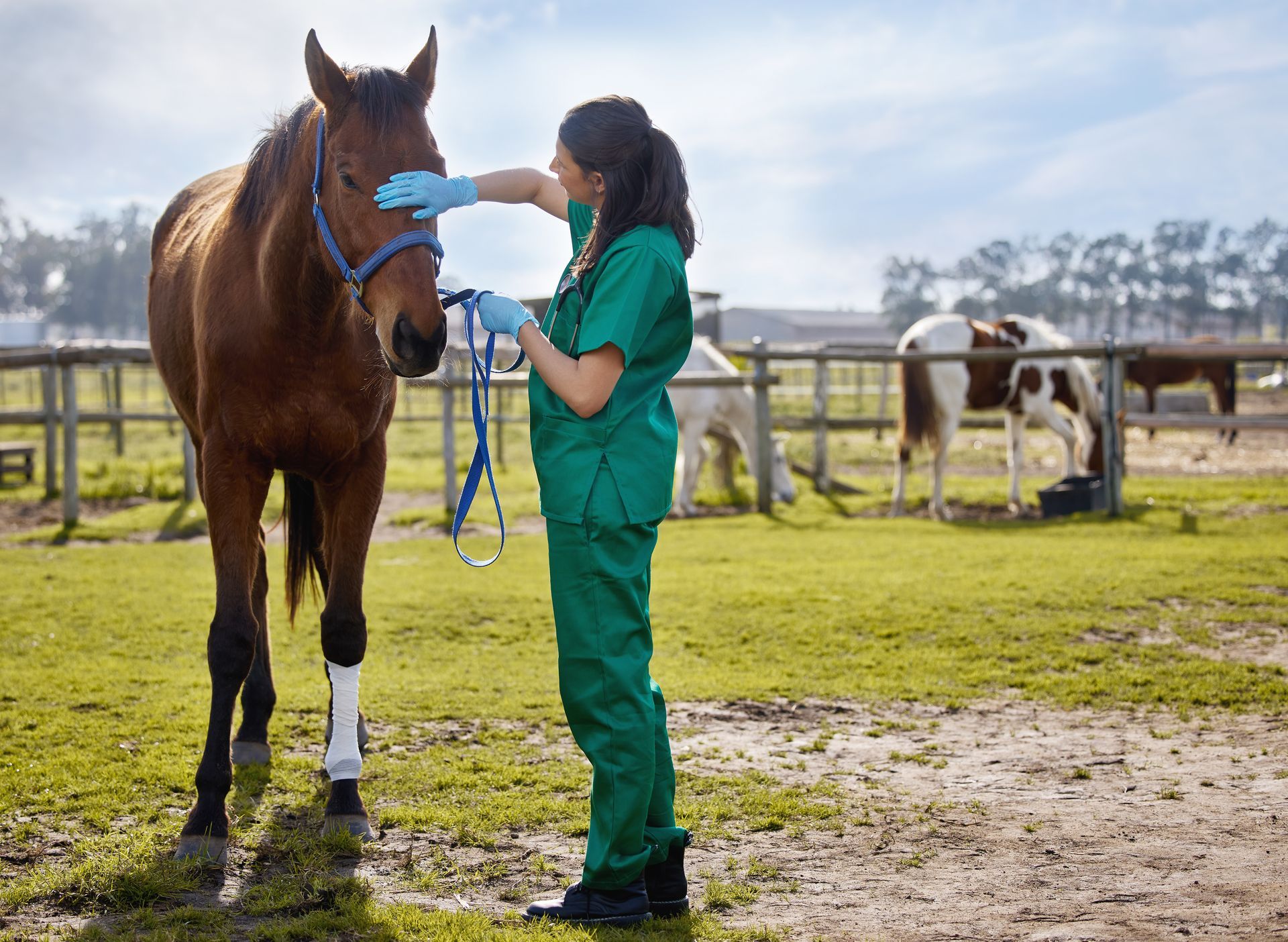News

In addition to our core services of being a wholesaler, export business, and veterinary buying group, we are now offering some additional services which can help maximise your practice’s revenue. We’ll be showcasing this in London, so let us know when you’re booking a meeting if you’d like to discuss any of the following: Online MerlinVet Pet Shops Bespoke & Limitless Health Plans & Treatment Plans Home Delivery of Prescription Products: MerlinVet Direct Make sure you visit us at London Vet Show to experience some animal magic – with themed games, giveaways and prizes, there’s going to be lots of magical experiences at Stand V55! We’ll have Merlin’s cauldron on the stand full to the brim with sorcery – hook out a ball inside and you may win a prize! We will also be on hand to answer any queries relating to our buying group, MerlinVet-cel, as well as MerlinVet Export, and of course our services through MerlinVet UK such as Special Import Products, fertility equipment, equine products, and more. Schedule a meeting below! Book a meeting with the team About London Vet Show: London Vet Show is the pinnacle of veterinary education, dedicated to providing high-quality CPD. With a carefully curated programme developed by veterinary experts, the event features handpicked speakers renowned for their knowledge and experience in tackling common challenges faced by veterinary teams. This two-day conference allows you to learn from industry-leading speakers, gain valuable insights, and transform your career and practice. It’s also the perfect platform for building connections. Engage with passionate veterinary professionals, pioneers, and experts from all over the world to discuss key topics, find creative solutions, and share ideas. Don’t miss the Vet Show Happy Hour on the show floor, a great way to unwind and network with the community. The event showcases over 400 industry-leading exhibitors, offering a unique opportunity to explore the latest innovations, try out new equipment, and chat with suppliers. Whether you’re comparing products or testing cutting-edge technology, the exhibition floor is where the future of veterinary care unfolds. The London Vet Show is not just about education – it’s an unparalleled experience, packed with opportunities for professional growth, networking, and hands-on learning. Don’t miss out on this exciting event, designed to elevate your veterinary practice and career to new heights. You can see what we got up to at LVS 2024 below. Find out more About MerlinVet MerlinVet is a full-service veterinary solutions provider for practices in both the UK and abroad, with specialisms in fertility equipment, sourcing Special Import Products which other wholesalers cannot provide, and exporting veterinary products globally. With additional expertise in providing health plan solutions and developing new veterinary software, as well as gas exposure monitoring and our buying group, our deep sector knowledge can add a touch of animal magic to practices, and ultimately fulfil our main ambitions of supporting the veterinary industry while enhancing animal health and welfare. If you’re visiting us at London Vet Show, make sure you’re following us on our socials to keep up to date with our activities: Instagram Facebook LinkedIn Join our mailing list

We’re particularly excited for BCVA Congress 2025 as it is taking place in our home city of Edinburgh this October! You’ll find us at Stand 36 where we’ll be showcasing our fertility equipment and running a special competition to win a bottle of MerlinVet Gin – don’t miss your chance to take part. We’ll also have some whisky to sample, so why not pop by Stand 36 for a dram and a chat? Make sure you don’t miss the Bull Semen Testing Workshop, “How to Avoid the Ball’s Up’s”, on Thursday 9th October at 14:00, which is being run by Robert Anderson with Iain McCormick and Colin Penny. At BCVA, you’ll be able to find out more about how we can support your cattle fertility work, but for a taster of some of the products we’ll be showcasing, take a look below. Find out more about BCVA Congress 2025 and book your place here . BoviLab Portable Blood Analyser BoviLab is a portable blood analyser from FarmLabo. This tabletop device brings you lab-quality results from anywhere, making blood analysis on-site quick and easy. BoviLab allows vets to support dairy farmers to improve transition management and ultimately improve overall cow health. BoviLab is designed for simultaneous testing of 6 parameters, including NEFA and BHBA, in just 7 minutes, providing highly accurate analysis on whole blood, heparin blood, or serum blood, with simple operation and automatic calibration. Product Highlights: On-farm convenience – perform tests without the need for a laboratory Get comprehensive blood analysis in just 7 minutes Measure six key inspection items simultaneously (including NEFA & BHBA) Designed for easy operation by anyone – simple operation, automatic calibration, low maintenance & durable Early disease detection – identify health issues in cattle before they escalate Protective Case and lightweight (2kg) for easy transportation Online data transmission Centrifugation is not required View BoviLab in action here Find out more and purchase here Ram E-JAC The MerlinVet E-JAC is a battery-operated self-contained electro-ejaculator designed for collecting semen from small ruminants. The E-JAC Ram Probe features: rechargeable battery with USB charger ergonomic design, suitable for all hand sizes high-low setting allowing versatility when collecting semen from different breeds, ages, and species lightweight with rubberised handle precision control on/off button & power on light protective carrier case and one year warranty specialist electrode technology the unit will operate for around 500 rams on a single charge The Ram E-JAC was developed with Lane Manufacturing, who have been setting the standard in the manufacture of large animal reproductive equipment and supplies since 1972. Find out more and purchase here Pulsator V The Pulsator V is the most advanced electronic bull ejaculator available, allowing users to collect bull semen in a safe and controlled environment. Manufactured by Lane Manufacturing & distributed by MerlinVet, features include: Improved battery and charging Smoother signal to the bull State of the art electronics Multiple, pre-programmed programs designed for specific breeds Stimuli counter The newest in bull probe technology, the two-electrode probe delivers a smoother signal to the bull and is a more durable construction than the older three-electrode probe. All two-electrode probes are weighted, gentle and efficient, while the shielding of the electrodes reduces back arching, hind limb extension & vocalisation. The nose now has additional weight, helping the probe to sit securely in the ‘sweet spot’ area. It’s also easier to clean, enhancing biosecurity and has improved water resistance. Find out more and purchase here

MerlinVet will be exhibiting at Vet Dynamics Conference 2025 at the Leonardo Hotel, Hinchley Island on 18th – 20th September 2025. This year we will be showcasing a couple of brand new services from MerlinVet, designed to enhance your practice’s revenue options. In addition to our core services of being a wholesaler, export business, and veterinary buying group, we are now offering some additional services which can help maximise your practice’s revenue. These include: Online MerlinVet Pet Shops – NEW! Expand your practice’s revenue whilst we do all the work Health Plans & Treatment Plans – Bespoke and limitless health plans and treatment plans Home Delivery: MerlinVet Direct – Home delivery of prescription products with MerlinVet Direct You can view more about these services on the MerlinVet Group website here or via our brochure .

Job Description: MerlinVet Group is hiring for the role of Warehouse Operative. We are looking to recruit a full time warehouse operative to join our team in Kelso where we pick, pack and dispatch orders on a daily basis. Hours: This role will be full-time, 8.00am to 4.30pm Monday to Friday Location: Kelso, Scottish Borders Salary: To be determined, 30 days holiday (including public holidays), company pension Key Responsibilities: Prepare and process orders for daily courier pickup (pick, pack, wrap, label, ship) Receive and process incoming goods and supplies (unload, label, store) Check for damaged or missing items and report appropriately Monthly stock audits and ongoing stock control Keep a clean and safe working environment and optimise space utilisation Computer skills – specific Warehouse Management software training will be given Report any discrepancies to RPs (responsible person(s)) Communicate and cooperate with other members of the warehouse team Follow quality service standards and comply with procedures, rules and regulations – training in Good Distribution Practice will be given Other duties as required Key Skills: Good organisational and time management skills Ability to lift heavy objects Ability to work in a team Proficiency in computer systems Full clean UK driving licence (desirable) Whilst experience in warehouse/stores would be preferable, all training can be provided where required Who will I be working for? At MerlinVet, we comprise a bespoke wholesaler, import/export business, buying group, health plan provider, and anaesthetic gas exposure monitoring service. By listening to the needs of vets we provide products, services, business solutions and support needed to run efficient and profitable practices. Website: merlinvetuk.co.uk Equal Opportunities MerlinVet is an equal opportunities employer, and we embrace the benefits that a diverse workforce brings. We welcome applications regardless of age, sex, gender identity, disability or medical condition, ethnicity, race, religion, family status, sexual orientation, or any other basis protected by appropriate law. How do I apply? Please email a copy of your CV and cover letter to Julia Tait by 23:59 on 12/09/2025: julia@merlinvet.co.uk

What is the Future Farming Investment Scheme (FFIS) 2025? The Scottish Government’s Future Farming Investment Scheme (FFIS) 2025 is a £14m “capital grant scheme designed to help eligible active farmers and crofters improve the environmental performance of their agricultural business”. The scheme opens on 14th July and closes on 22nd August 2025. FFIS will provide grants of up to £20,000 to help farmers invest in agricultural equipment that can improve business efficiency and sustainability – this includes Numnuts® devices and accessories. Grants will be awarded to farmers and crofters in Scotland, dependent on them being able to effectively demonstrate that their purchase(s) can meet at least one of these objectives: improve business efficiency and sustainability protect, restore or enhance the environment reduce greenhouse gas emissions mitigate the effect of climate change Funding can cover up to 100% of eligible investment costs. Find out more about the scheme here View the FFIS Guidance here Why does this matter to farm vets and where does Numnuts® come in? By purchasing through MerlinVet UK via the link below, you can buy a Numnuts® device at the veterinary purchase price of £300 and sell to farmers at the Recommended Retail Price (RRP) of £410 + VAT. Farmers should purchase at the RRP to be eligible with their application and include this purchase price in their application to be successful. Let your farm clients in Scotland know about the grant so they can receive equipment to aid their business. If you’re looking for products to suggest to farmers, then look no further than Numnuts® – the FFIS grant will pay farmers up to 100% of castration and tail docking devices, as outlined in the A-Z list of eligible items below. Farmers are able to choose items that are relevant to their business – we’d suggest a Numnuts® device and ring dispenser. A-Z List of eligible items Purchase Numnuts here Anything else you should know? Let farmers know that they should only purchase their Numnuts device and other farming equipment after their grant application has been approved. They will have nine months to make any purchases upon receiving grant approval. Why should you recommend Numnuts®? If you are looking at castration and tail docking devices that minimise pain , as outlined on the A-Z of eligible items, and that adhere to the objective of improving business efficiency and sustainability for farmers, look no further than Numnuts®. Farmers should be prepared for next lambing season with the 2-in-1 device that administers an Elastrator® ring along with a pre-calibrated dose of local anaesthetic. This device makes giving fast-acting targeted pain relief for castration and tail docking of lambs easy, fast, and safe. Benefits of Numnuts® include: Revolutionary patented device combines tail docking and castration with targeted pain relief, all in one handled unit Reduce labour time/cost Dual Stage Injector technology prevents accidental injections Easy priming Accurate Dosing No weighing or weight estimation required – simple one dose amount for all lamb sizes, for both tail & testes Needle Safe Simple needle changeover In 2025, the Scottish Government confirmed that farmers in Scotland can legally use Numnuts® for castrating or tail docking lambs up to 12 weeks old, provided an anaesthetic is administered. This clarification brings significant relief to Scottish farmers and veterinarians seeking reassurance on the legality of using Numnuts®, which minimises the pain and distress associated with traditional rubber ringing procedures. Numnuts® adheres to animal welfare standards and provides a compassionate alternative to older methods. You are able to purchase Numnuts here . If farmers are looking to speed up their tail docking and castration next lambing season, make reloading rings onto the Numnuts® device easy with the Elastrator® Automatic Ring Dispenser. Pour your rings into the top of the dispenser and let it do the work of arranging the rings, ready to quickly and easily pick up, letting you carry on with marking with less fuss. You can purchase the ring dispenser here. Any Questions? Email Dougal for more information and advice. Download our information pack to send to your farm clients here

MerlinVet and Numnuts® will be exhibiting at The Royal Highland Show 2025 at Ingliston in Edinburgh from Thursday 19th – Sunday 22nd June 2025. You’ll be able to find us amongst the sheep in the NSA Marquee, Avenue M, Stand 1B. After a fantastic turnout at the NSA Highland Sheep in Ardgay, it will be great to see as many new and familiar faces as possible at RHS 2025. Come along to the Numnuts® stand to have a go on Baaaary, our Demo Lamb, or alternatively try to guess the number of rings in the jar to win a Numnuts® device and, while you’re there, feel free to pick up some Numnuts branded merch. MerlinVet Sponsoring Hampshire Down Class Merlin will again be sponsoring the Hampshire Down class. You can find more information below: To be judged at 09.00 on Friday 20th June Judge: Mrs Lucy Heywood, Watchet, Somerset Please note Sheep Regulation 51: Where there is a Flock Book, all sheep must be entered or be eligible for entry in that Flock Book. Exhibitors need not be members of the Breed Society 81 RAM, two shear or above 82 SHEARLING RAM, shorn bare on or after 1st March in current year 83 RAM LAMB, born on or after 1st December in the previous year 84 AGED EWE, to have reared a lamb in current year 85 SHEARLING EWE, shorn bare on or after 1st March in current year 86 EWE LAMB, born on or after 1st December in previous year View the full livestock schedule here For tickets to the Royal Highland Show and for more information, please click here What is Numnuts? Numnuts® is a 2-in-1 device that administers an Elastrator® ring along with a pre-calibrated dose of local anaesthetic. This device makes giving fast-acting targeted pain relief for castration and tail docking of lambs easy, fast, and safe. No other device exists that allows farmers and vets to provide targeted pain relief to lambs during tail docking and castration. Find out more and purchase here

MerlinVet will be exhibiting at the VET Trust Conference 2025 which will be taking place on Tuesday 3rd – Wednesday 4th June at the Stirling Court Hotel in Stirling. The conference aims “to provide topical and useful education targeted at Veterinary Surgeons in practice in a setting where there is ample opportunity to meet informally with speakers, colleagues, pharmaceutical and equipment representatives.” There will be several different streams at the conference, including equine, companion animal, nurse, and production animal. The AGM will be held on the Tuesday at 17.15 with the conference dinner taking place afterwards from 19.00 onwards. You can book your conference tickets here . You’ll be able to meet with representatives of the team covering MerlinVet-cel , MerlinSPS , and MerlinVet UK . About Vet Trust: VET Trust is a non-profit making, charitable organisation. It is run by a board of directors with the objective of providing, promoting, encouraging, and advancing the continuing education of those involved in alleviating the suffering of animals and who are engaged in or associated with the practice of the art and science of veterinary medicine and surgery.







